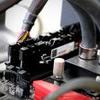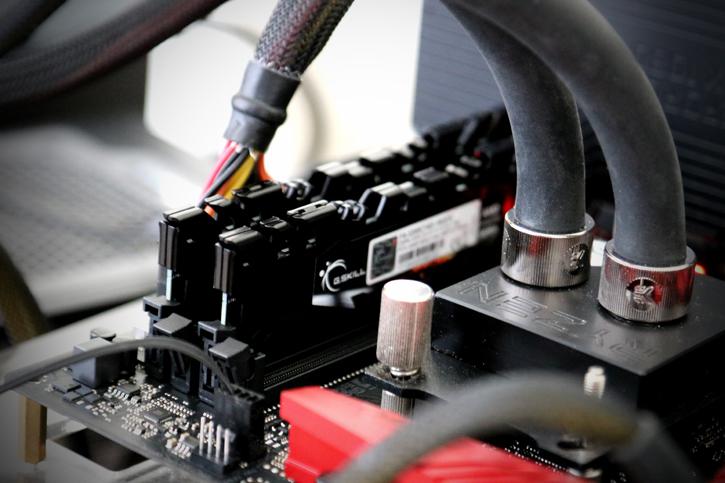Final Words & Conclusion
Final Words & Conclusion
So as stated, this really was supposed to be a review on the Flare X memory from G.Skill. But over the past 3 days this somehow transformed into a Ryzen 7 memory performance analysis with some added tweaking as well. Everything you have read and seen in this article remains relative.
Performance gains
If you had used a Ryzen 7 1800X processor the perf differential with CPU tweaking obviously would have been much lower. But I stated this so many times already, Ryzen 7 1700 is the golden processor eight-core SKU that offers great value. Combined with the right memory and a proper tweak you can achieve increases in performance of up-to 30%. The increase in memory can enhance your game-play at CPU bound situation by 5 to 10%. Now I do have to state that it is not guaranteed that you will reach say 4 GHz on that Ryzen 7 1700. You'll need a bit of luck with your purchase.
Pricing
Does the high frequency memory justify the 200 euro costing 16GB kit as tested today? Ehm, quite honestly no .. my old recommendation still stands. With Ryzen you probably want to start with a 2667 MHz kit, and after this analysis I find 2933 MHz to be a real sweet-spot. G.Skill will offer that memory frequency at one point available as well. That slightly slower memory will get you roughly the same performance but at less cost. Hey you guys have seen the numbers, typically high-frequency memory does not matter, with the Ryzen platform it however does. The DIMMs we tested today are high-density 8GB DIMM modules and as such it is impressive to see that this kit can easily run an up-to 3200 MHz frequency on such a young platform as X370/Ryzen/AM4 offers. G.Skill for now only offers 8GB DIMMs, meaning you will be tied towards 16/32/64 GB kits mostly with varying frequencies and latency's. We spotted them staring at CL14/15/16 and 2133 MHz up-to 3200 MHz.
Conclusion
Ryzen is memory frequency dependant, it is hungry for bandwidth and lower latency, but that's not the all saying conclusion. It is the accumulation of multiple and many factors that is going to drive up Ryzen performance. As stated, we can gain 30% performance on a Ryzen 7 1700 by tweaking the processor and using 3200 MHz memory. In gaming that number will obviously differ, but it all surely helps. This article is not meant to be seen as comparative towards Intel processor, but more as a 'how can I gain perf' read. I mean I mentioned it in the review many times, everything is relative and the relative fact is that the right Intel processors can overclock even higher. Short term, I still feel that for a pure gaming platform right now a quad-core Core i7 7700K will offer the better performance if paired with a super fast and expensive graphics card, but only then and only at 1080p. However long term - week after week after week we see Ryzen performance increasing and you jumped from four to eight cores with Ryzen 7. The perf increases happen in small steps and whether that is from BIOS updates, game engine optimizations, changes in memory frequency and/or overclocks, it all adds up bit by bit. As such Ryzen 7 1080p game performance is on the Ryze (pardon the pun) as well. Long term thinking, with say a Ryzen 7 1700 processor you are looking at a fantastic threading 8-core processor with leading desktop application performance at a fantastic price for the platform (mobo/proc). However imho the memory cannot and may not be too expensive. Take my advice, 2667 or 2933 MHz seems to be a sweets-spot and CL 15 or 16 is fine as well.
Right, back to the Flare X memory. Sorry G.Skill, this was supposed to be a review for you guys :) The Flare X memory rocks. With our ASRock motherboard we seated the memory, in the BIOS we enabled XMP and it was done. We got instant properly configured timings, frequency and DDR4 voltage. That is testimony to what we want to see. I am sure this memory will not do the sexy XMP thing on all motherboards out there just yet as firmware updates need to be applied. If that happens to you, just insert the settings manually in the BIOS. But I bet that 9 out of 10 motherboards will support this memory as G.Skill is making sure of that cross-brand compatibility by seeding the motherboard manufacturers this type of memory. The price for 16GB 3200 MHz CL14 I find to be steep at that 215 Euro/USD marker, again you could settle for something like 2667/2933 MHz with CL15 or C16 as well. But the Flare X memory itself does what it promises, it is highly compatible and stable and as such comes recommended by Guru3D.com.
- Sign up to receive a notice when we publish a new article
- Or go back to Guru3D's front page



